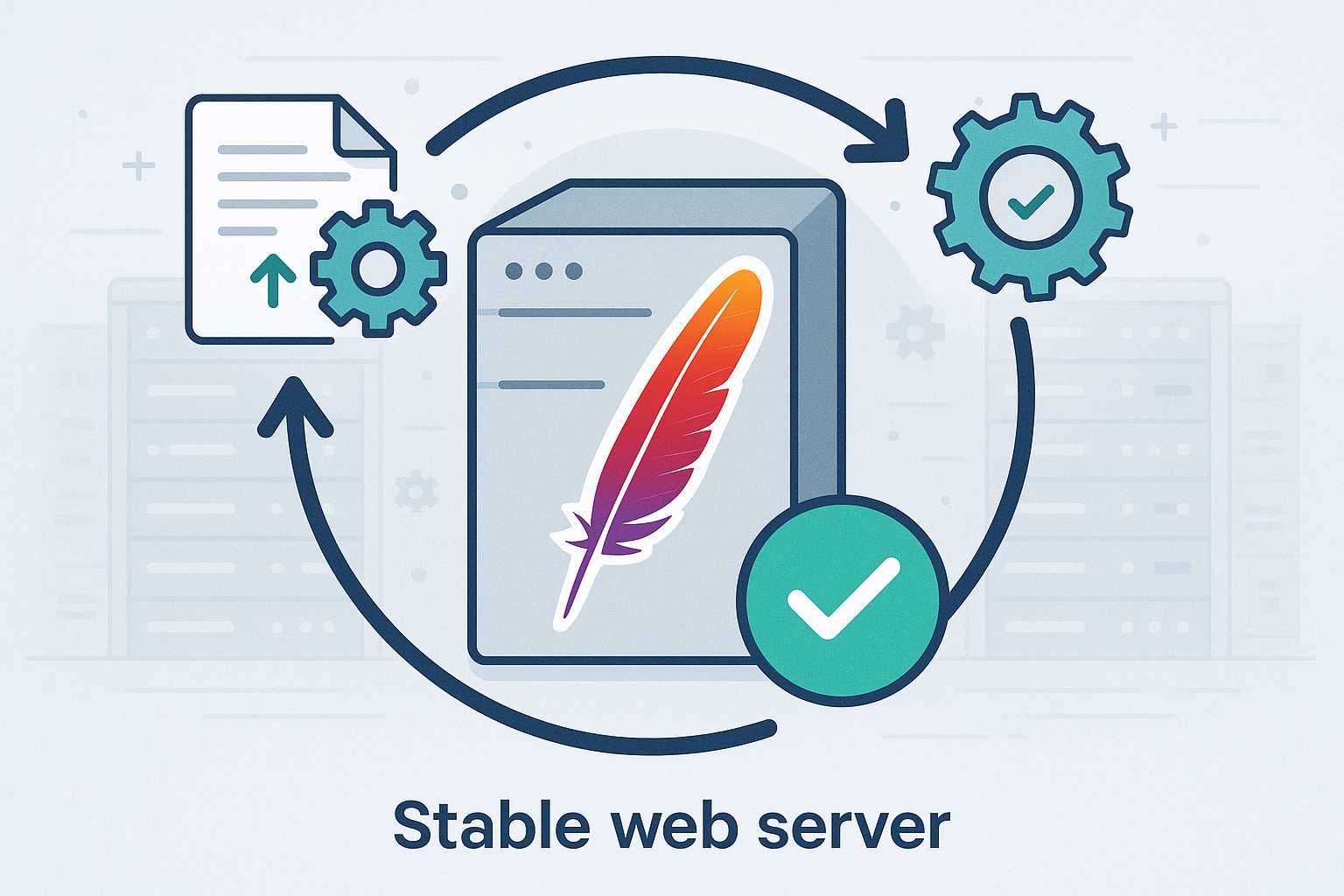When administering Apache web servers, it’s common to tweak configuration files to update virtual hosts, enable new modules, or adjust security policies. However, applying these changes can be nerve-wracking if you’re worried about interrupting service for your users. Fortunately, Apache provides several ways to reload configuration without causing downtime.
In this article, I’ll walk you through how to gracefully reload Apache using command-line tools, ensuring continuous availability for your websites.
Why Not Just Restart Apache?
A full Apache restart (apachectl restart or systemctl restart apache2) forcefully stops all worker processes and then launches them anew. While this is quick, it can disrupt active connections—potentially resulting in dropped client requests or brief outages on busy sites.
To avoid this, Apache supports graceful reloads. This allows current connections to complete before reloading configuration, so your site stays online without missed requests.
Gracefully Reloading Apache: The Basics
There are a couple of commands to perform a graceful reload, depending on your Linux distribution and how Apache is managed:
Using apachectl (Most Distros)
sudo apachectl graceful
This sends the SIGUSR1 signal to the main Apache process, instructing it to reload configuration files without shutting down existing worker processes. Active requests finish serving as new configurations are adopted for fresh connections.
Using systemctl (systemd-managed Systems)
sudo systemctl reload apache2
# or
sudo systemctl reload httpd
This invokes the same graceful reload under the hood (for both Debian-based and Red Hat-based systems, respectively).
When (and When Not) to Use Graceful Reloads
A graceful reload is ideal for:
- Adding or modifying virtual hosts
- Updating configuration files
- Enabling or disabling modules (most of the time)
However, some changes—like upgrades to core Apache binaries or modules—may still require a full restart. For most configuration adjustments, a graceful reload is sufficient and much kinder to your users.
Pro Tip: Validate Your Config Before Reloading
Before reloading, always check for syntax errors:
sudo apachectl configtest
Look for Syntax OK in the output. This prevents outages caused by misconfigurations.
Wrapping Up
With these tips, you can make live changes to your Apache configuration with zero disruption—no more holding your breath during restarts! Get into the habit of reloading gracefully, and your uptime (and users) will thank you.
Happy hosting!
Lenny


Leave a Reply